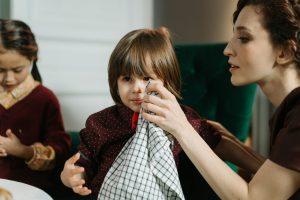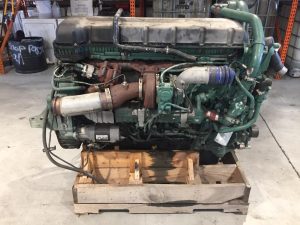Mastering Automated Trading Strategies for Modern Investors
Understanding Automated Trading Strategies
Automated trading strategies refer to the use of algorithms and computer programs to execute trades on financial markets automatically, without human intervention. These highly technical systems can analyze market data, identify trading opportunities, and execute trades based on predetermined criteria. This level of automation has revolutionized trading, making it more efficient and potentially more profitable. In this comprehensive guide, we explore the foundations of automated trading strategies, their benefits, types, development processes, associated risks, and performance evaluation metrics.
What Are Automated Trading Strategies?
Automated trading strategies, also known as algorithmic trading or algo trading, implement a set of programmed rules based on market analysis and data inputs. These strategies allow traders to capitalize on market movements at speeds and efficiencies that are impossible when executed manually. By using mathematical models and complex algorithms, automated trading systems can execute trades in milliseconds, making them highly effective in fast-paced environments such as forex or high-frequency trading.
Benefits of Automated Trading Strategies
The advantages of utilizing automated trading strategies are numerous:
- Discipline and Emotional Control: Humans often let emotions dictate trading decisions. Automated strategies eliminate emotional biases, ensuring trades are executed based solely on logical, predefined criteria.
- Backtesting Capability: Traders can test their strategies against historical data to assess performance without risking real capital.
- Consistency: Automated systems maintain consistent execution which adheres to a trading plan without deviation, thereby enhancing the trading discipline.
- Time-Saving: Automation reduces the time required to monitor and manage trades, allowing traders to focus on strategy development and improvement.
- Access to Multiple Markets: Automated trading systems can simultaneously monitor multiple assets and markets, providing opportunities that a trader might miss when trading manually.
Common Myths About Automated Trading Strategies
Despite their growing popularity, several myths about automated trading strategies persist:
- Myth 1: Automated systems guarantee profits. While they can improve efficiency, no trading strategy is foolproof.
- Myth 2: They require advanced programming skills. Several platforms offer user-friendly tools that require minimal coding knowledge.
- Myth 3: Automated trading lacks flexibility. Many systems can adapt to various market conditions and allow traders to adjust parameters quickly.
Types of Automated Trading Strategies
Automated trading strategies can be categorized into several main types, each employing different methodologies to capitalize on market movements.
Trend Following Automated Trading Strategies
Trend following strategies are designed to capitalize on sustained shifts in market prices. Traders rely on technical indicators, such as moving averages and momentum indicators, to determine trends and make buy or sell decisions accordingly. For instance, an automated system may signal a buy when an asset’s price surpasses its moving average, indicating an upward trend.
Mean Reversion Automated Trading Strategies
Mean reversion strategies are based on the premise that asset prices tend to revert to their average over time. These strategies identify overbought or oversold conditions and make trades that bet on the eventual return to the mean. Algorithms will typically analyze price statistics, such as Bollinger Bands, to identify potential mean reversion opportunities.
Arbitrage Automated Trading Strategies
Arbitrage strategies exploit price discrepancies between different markets or instruments. Automated systems can quickly compare prices across exchanges and execute trades to lock in profits before prices converge. For example, if a stock is priced lower on one exchange compared to another, the system can buy from the cheaper exchange and sell on the more expensive one, generating profit from the price difference.
How to Develop Automated Trading Strategies
Creating a successful automated trading strategy involves a systematic approach that combines analytical skills, market knowledge, and technical proficiency.
Defining Trading Goals and Objectives
Before developing any trading strategy, it’s critical to define specific goals and objectives. These could include factors such as risk tolerance, capital allocation, desired returns, and the time frame for trading. Clear objectives guide the formulation of a strategy tailored to meet individual trader needs.
Selecting the Right Tools for Automated Trading Strategies
Choosing the right tools and platforms is essential. Various trading platforms offer proprietary software for building automated trading systems, eliminating the need for deep programming knowledge. Popular tools may include backtesting capabilities and predefined algorithms for common strategies, enabling traders to build, test, and refine their approaches effectively.
Backtesting Your Automated Trading Strategies
Backtesting is a vital step in strategy development. It involves analyzing how a trading strategy would have performed historically using past market data. Successful backtesting provides insight into potential profitability and risk levels, guiding traders in refining their strategies before deploying them in real markets.
Risks and Challenges in Automated Trading Strategies
While automated trading strategies offer significant benefits, they also come with risks that traders must understand and manage effectively.
Understanding Market Conditions
Market conditions can change rapidly. Strategies that perform well in one environment may fail in another. For instance, a trend-following strategy may struggle during choppy market conditions. Therefore, it’s crucial for traders to continuously evaluate how market conditions may affect strategy performance.
Managing Emotional Bias in Trading
Although automated trading reduces the emotional component, traders must still manage their emotions concerning strategy development and performance. The temptation to adjust an algorithm based on knee-jerk reactions to market movements can lead to poor results.
Regulatory Considerations for Automated Trading Strategies
Regulations governing trading, particularly automated trading, can vary significantly between jurisdictions. Traders must ensure compliance with relevant laws, especially concerning market manipulation and the use of technology-based trading systems.
Evaluating Performance of Automated Trading Strategies
Measuring the effectiveness of automated trading strategies is crucial for continuous improvement and adaptation. Here are key metrics and methods for evaluating performance.
Key Performance Metrics for Automated Trading Strategies
Important metrics to monitor include:
- Return on Investment (ROI): Measures the profitability of the strategy compared to the investment made.
- Sharpe Ratio: A risk-adjusted measure that indicates how much excess return is received for the extra volatility endured by holding a riskier asset.
- Maximum Drawdown: The largest decline observed from a peak to a trough, which helps understand risk tolerance.
Continuous Improvement of Automated Trading Strategies
Even after implementation, automated trading strategies require periodic review and refinement. Market dynamics can shift, and strategies need to adapt to these changes to maintain effectiveness. Traders should regularly assess and update their approaches based on performance data and changing market conditions.
Real-Life Case Studies of Successful Automated Trading Strategies
Examining successful automated trading strategies can provide valuable insights. One common example involves a trend-following strategy employed successfully in forex markets, where algorithms monitored major currency pairs, executing trades during periods of significant momentum. Another example can be found in equities, where mean reversion strategies have been employed effectively by hedge funds to capitalize on temporary mispricings.
Conclusion
Automated trading strategies have transformed the landscape of financial trading, leveraging technology to enhance efficiency, discipline, and profitability potential. By understanding the foundational concepts, benefits, and risks, traders can effectively harness automated systems to meet their trading objectives. As the market continues to evolve, those who can adapt and fine-tune their strategies will be best positioned for success.












Post Comment